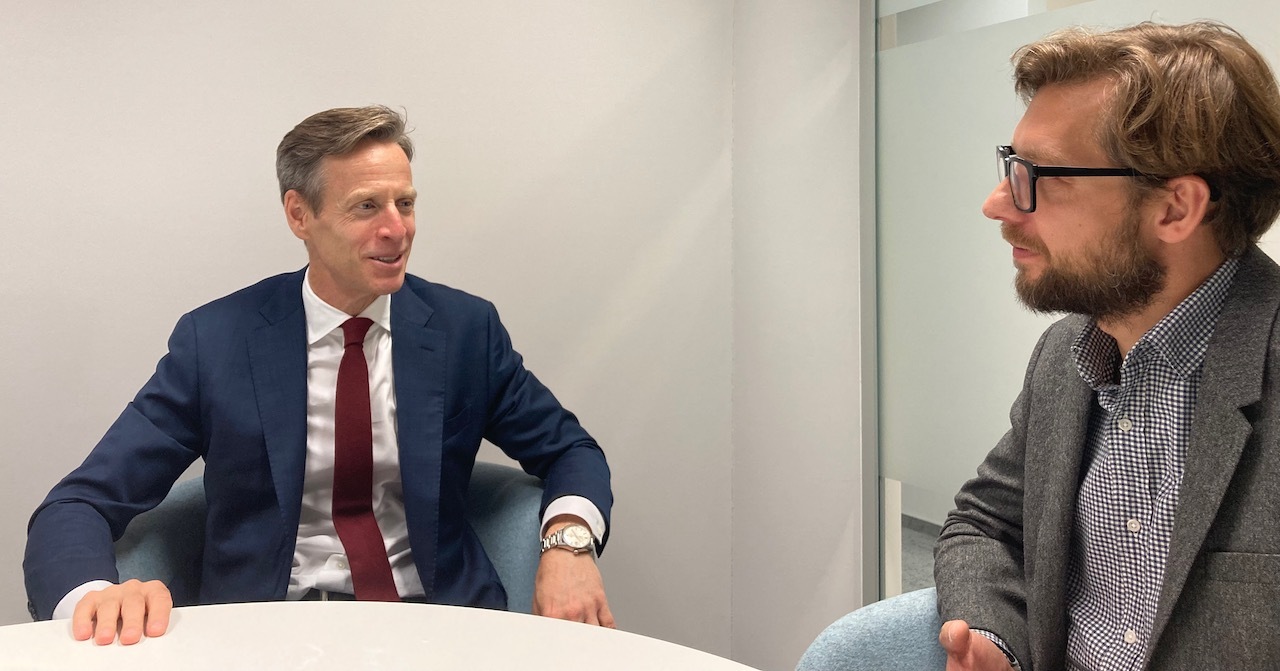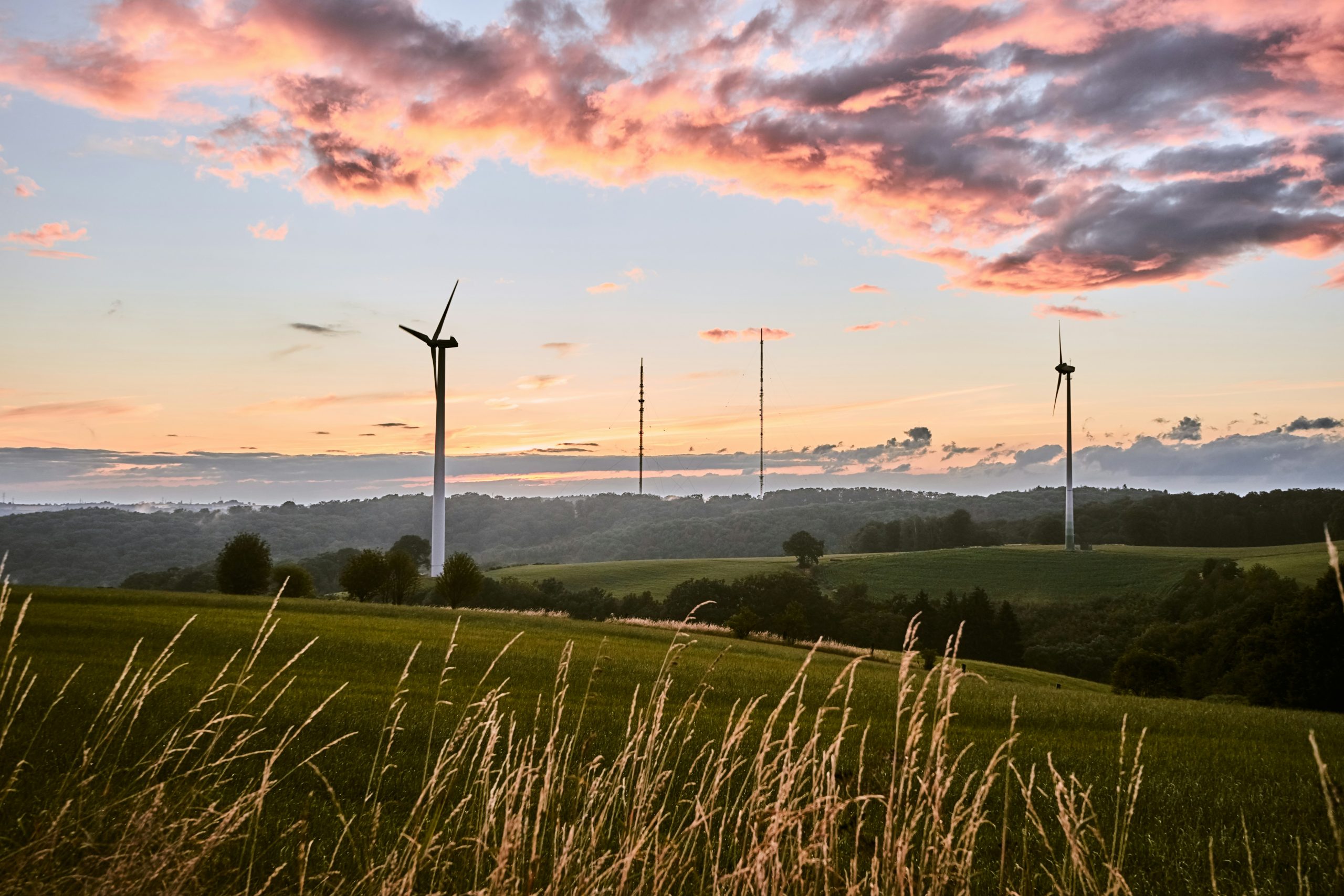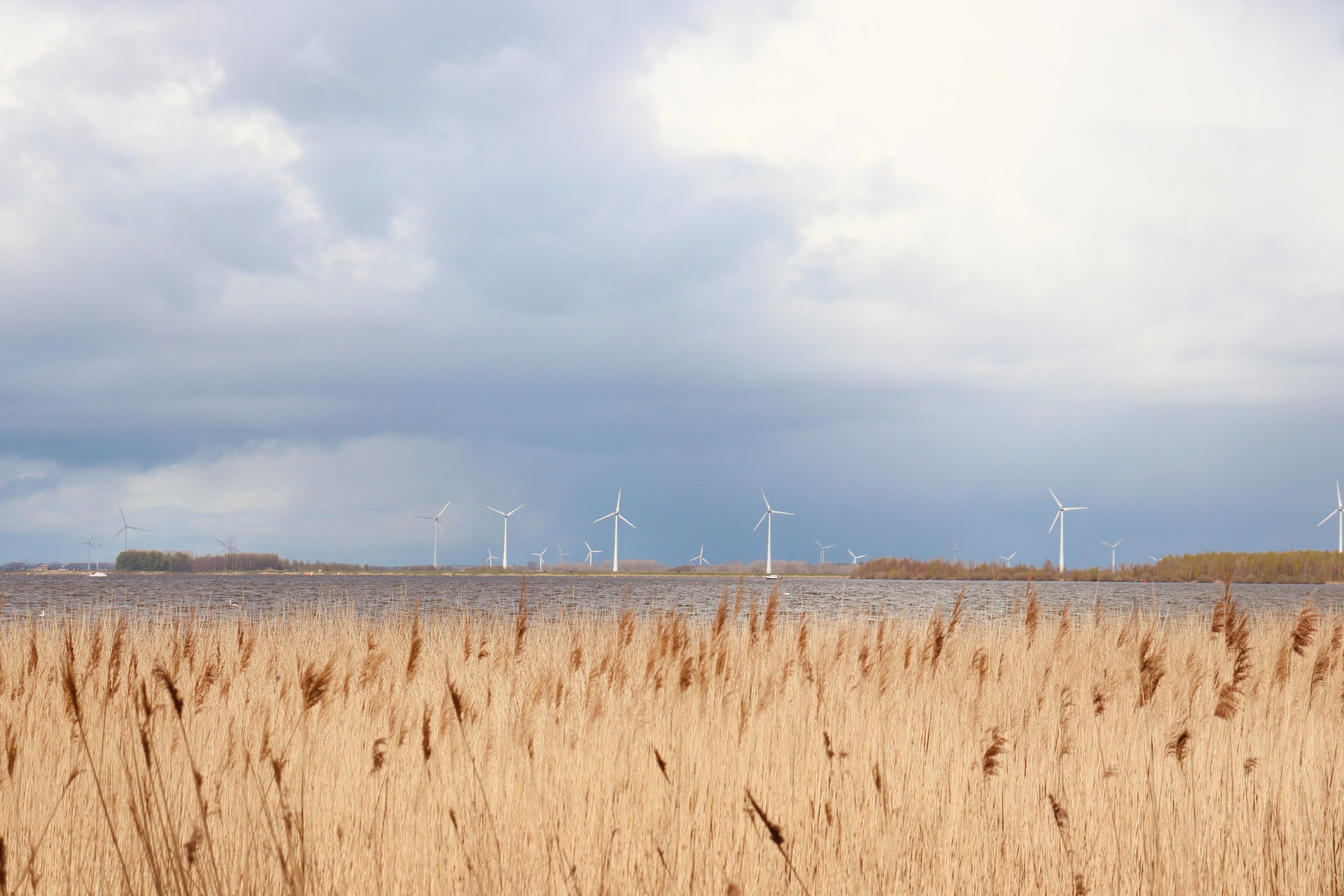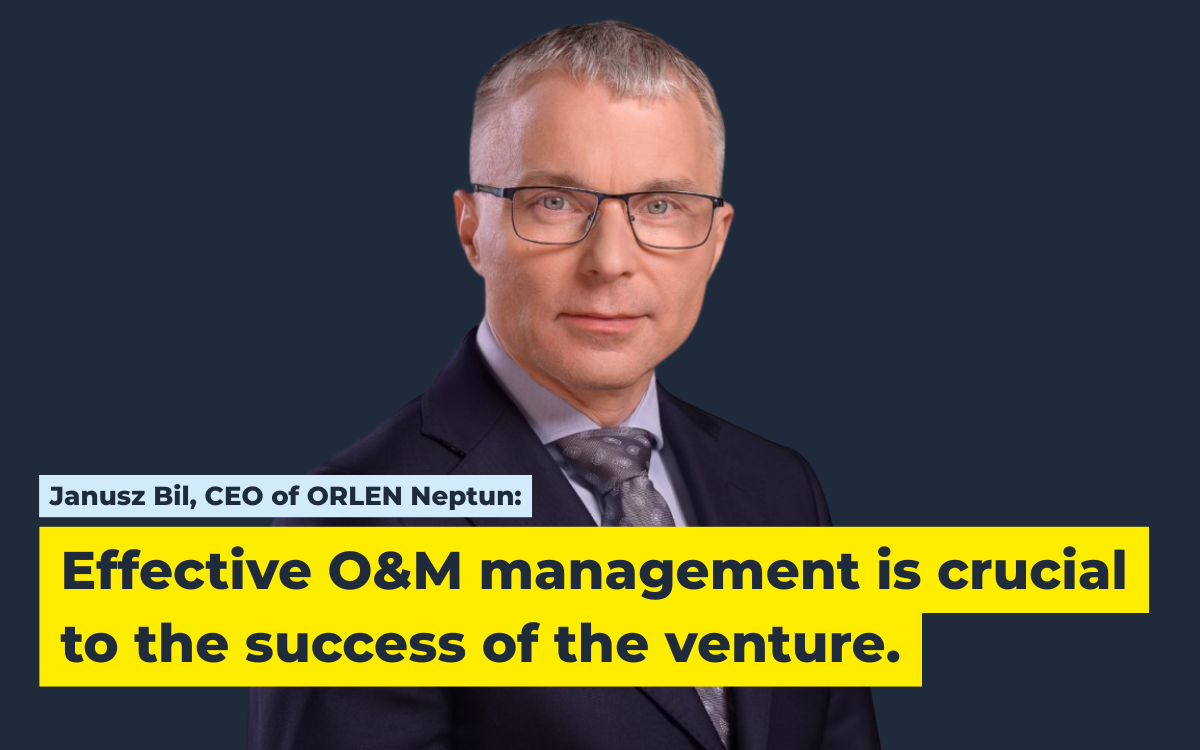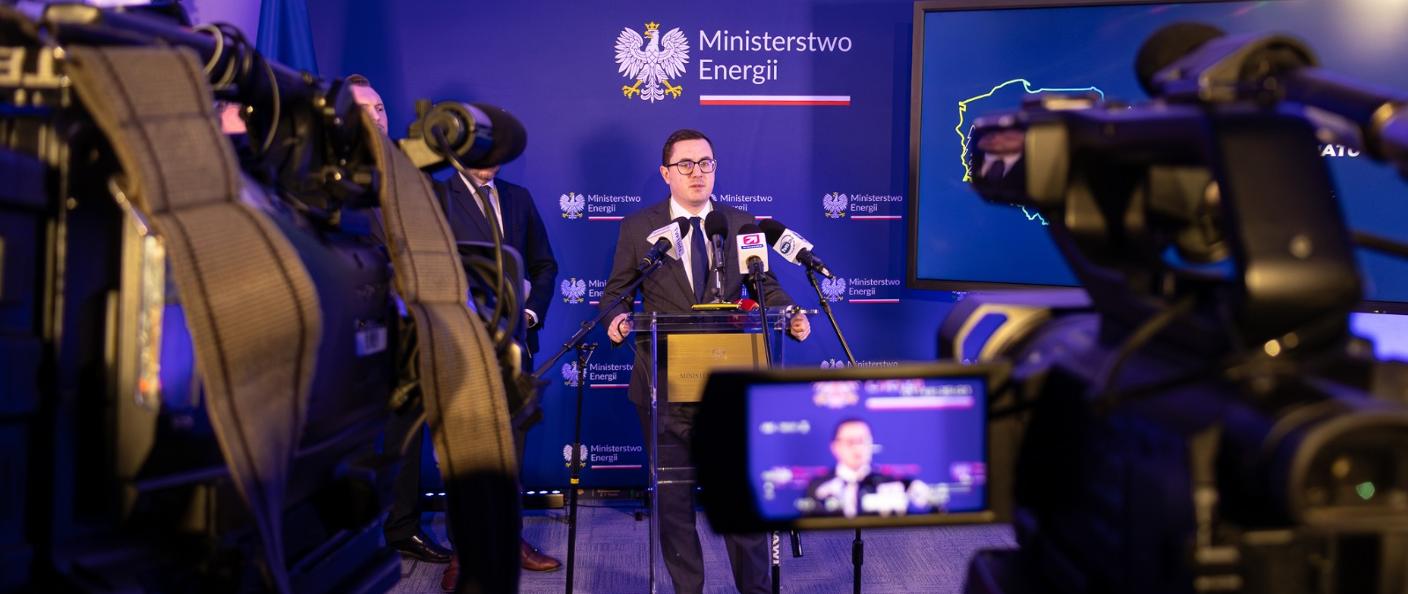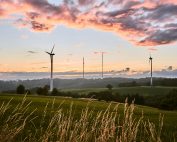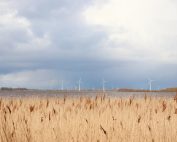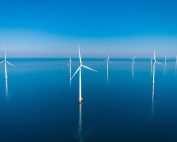We spoke with Mike Crawley, CEO of Northland Power, on the occasion of his visit to Poland in October, during which the selection of Vestas turbines for the Baltic Power project and the construction of an installation terminal in Świnoujście were announced. The Canadian company he heads is one of the most experienced developers of offshore wind farms in the world. Together with PKN Orlen, it is developing the Baltic Power wind farm project. During the lengthy interview, we talked about, among other things, where the offshore industry is, what the market growth factors are, where the main bottlenecks are, and how to meet growing expectations from the European Union and member states for more and more capacity from offshore wind farms.
Paweł Wróbel, BalticWind.EU: What is the purpose of your visit to Poland?
Mike Crawley, CEO Northland Power: We were in Szczecin, Poland to formally announce Vestas as our selected turbine suppliers to the Baltic Power project. Vestas will provide 76 turbines, each with a capacity of up to 15 MW, and Baltic Power will be one of the first wind farms in the world where they are deployed. As part of this supplier announcement, Northland also announced our investment in a manufacturing fabrication facility that Vestas will set up in Poland. This is more than just a supply contract, this is investment in infrastructure that will support not only the Baltic Power project but Poland’s growing offshore wind sector for future generations. Our project partners, Orlen, announced some exciting investments of their own with the news that they will build a port terminal in Świnoujście big enough to support deliveries for Baltic Power. The port will be an economic driver for Poland through long-term job creation and signals our ongoing commitment to advancing Poland’s offshore wind sector. Those were the two main purposes of that event (in Szczecin on October 13th). Being in Poland since Covid is also a good opportunity for me to meet with different stakeholders and contacts, including the Canadian Embassy.

Paweł Wróbel – Managing Director, BalticWind.EU; Mike Crawley – CEO, Northland Power
How often do you come to Poland?
This is my first time back to Poland since COVID. In Europe, Northland has several teams and offices, including our European headquarters and our in Offshore Wind Center of Excellence in Hamburg, Germany, a team in Amsterdam, and of course our project team here in Poland for Baltic Power. I’ve been here frequently before COVID exploring different partnerships and working with our head of development and others on the partnership that we entered into with PKN Orlen on the Baltic Power project. This is a big priority for Northland Power.
It’s a large project and moreover just offshore wind in the Baltic Sea in general is where we see a lot of growth coming for the company in the years ahead. I am proud that Baltic Power will be the first Offshore Wind project in Poland!
What is your general assessment of the moment the offshore industry is now – post-COVID time, ongoing war in Ukraine, energy crisis in Europe, high inflation rates etc.?
There’s tremendous growth ahead for offshore wind. Most forecasts show that it will be the fastest growing renewable technology over the next decade for any market that doesn’t have a lot of available land for significant volume of onshore renewables. Coastline is going to start turning towards offshore wind to supply energy not just in terms of decarbonizing grids but also in terms of energy security just having domestic energy supply. I think that will drive a lot of growth in offshore wind. The supply chain has got to catch up. In other words, there’s a lot of state targets for offshore wind that are very ambitious and in the last year have grown even larger with what’s going on in Ukraine in terms of energy security. The supply chain has to catch up both the turbine, O&M’s but also the rest of the supply chain to make sure that they can meet the demand for offshore wind projects there will be for lots of capital it’s really people and supply chain that needs to catch up.
There is rising expectation from policymakers here in the Baltic Sea region. The Marienborg Declaration aiming on increased offshore targets has been just signed. We have also European Commission strategy also with ambitious approach. How to deliver those targets? What is really doable?
Since the war in Ukraine started, almost all European countries increased their offshore wind targets, which is great for the industry and the climate but is it doable? It is an important question you are asking. To support these ambitions the industry needs clear actions from governments to follow-up on these commitments: credible intermediate goals, long-term and stable regulatory framework and provision of infrastructure are all good things. Ultimately, governments need to collaborate rather than compete. Therefore, agreements like the one from Marienborg or the North Sea Energy Cooperation are important to ensure this collaboration. Especially in these times.
The supply chain is also a critical factor here. We need a healthy supply chain. We need a supply chain to grow and be stable. That means that however the states set up their procurement programs they must do it in a way that allows all elements of the supply chain to benefit from the value chain. That means the revenue contracts must allow everybody to make a reasonable but not outrageous profit so that the supply chain can be stable. If you create a strained supply chain or create an environment where suppliers can’t benefit in any way, you eventually see major suppliers go insolvent. That was where the sector was headed prior to what happened over the last year with the COVID recovery and energy security.
What happened in the last year kind of caused everybody to take a step back, including the turbine suppliers, and say – this isn’t working for us. I think if that hadn’t happened with the rapid escalation of steel prices and so on. I think the path the industry was taking with hyper-competitive bids for offtake contracts, the withdrawal of state governments from providing any support for revenue contracts and leaving it just to corporate offtake agreements created a strenuous environment for all involved. I think you would have seen some insolvencies in the supply chain, you would have seen some projects collapse. Given that, it seems imperative that these projects move ahead and that more of these projects move ahead in terms of energy security. In my view the states must put together a procurement regime both for sites and for revenue contracts that allow for reasonable profits.

Mike Crawley – CEO, Northland Power; Paweł Wróbel – Managing Director, BalticWind.EU
What do you think once you see offshore targets planned by governments and the EU?
Two constraints are people and supply chain. I mentioned supply chain earlier, let’s talk about people.
We have an obligation to go out and engage with universities and find out how we can pull more people into offshore wind. In some cases, it means nurturing that talent ourselves by hiring them straight out of school. We need to do that, but we also want to partner with governments to figure out how we can do it better together.
Poland has huge opportunity when it comes to workforce. There’s a well-educated population, and a lot of young people in university programs and engineering programs that could be directed into offshore wind. These are people that could be given opportunities in offshore wind through the projects going ahead in Poland and in the Baltic Sea states in the years to come, but they could also support projects in the rest of Europe as well. I mean we would love to not just have a project office here in Warsaw we would like to have a Northland Power office as well where we could recruit talents and use them for projects everywhere.
What are your short- and medium-term predictions for renewable markets, in particular offshore wind markets?
Looking at this from a global perspective, the need for renewable energy is growing and will only continue to accelerate as regions around the world look to meet decarbonization goals. Offshore wind is the fastest growing renewable technology.
In Europe, governments are setting ambitious targets to help address urgent need for energy security and independence. Especially given the global issues ongoing in Eastern Europe. We are active in Germany with two operating offshore wind farms and another 1.6GW project in development in the North Sea, the “Nordsee Cluster” in partnership with RWE. Additionally, last year we entered the Scottish market and have two sites, one fixed-bottom and one floating, to develop over the next 6-8 years. We are also looking for other business opportunities of course, but I really believe in the potential of the Baltic Sea.
It’s amazing – it’s a largely new market for offshore wind. There is a lot of very good state support in Poland, emerging state support in the Baltic states for offshore wind. It is a new market but it’s a new market that draws on some of the existing talent in Western Europe that was used to build some of the original offshore wind projects in the world and it also draws some extent on the supply chain. Even Vestas is a great example even though they’re it’s a Danish company but a Danish company that will be setting up fabrication in Poland. So, it’s a perfect blend of a brand-new market but also leveraging off an existing supply chain and an existing talent pool.
In Asia, Northland has a growing presence. There’s a big push in northeast Asia for energy security but there are limitations for onshore renewable projects – there is not enough space. Asia is operating with carbon-intensive electricity grids. There is a lot of coal and oil-fired generation so there is great potential within this region to help grow the sector and directly impact decarbonization goals.

Mike Crawley – CEO, Northland Power; Paweł Wróbel – Managing Director, BalticWind.EU
What added value does Northland Power provide to projects in Europe?
What Northland brings is the pool of talent in offshore wind that we’ve been building over the last decade. In 2014, we became the first Canadian power producer to enter the European offshore wind market with our €2.8 billion Gemini offshore wind farm in the Netherlands. Since then, we’ve built two other offshore wind farms that are now in operation in Germany – Deutsche Bucht and Nordsee One – equaling 1,200 MW in operation. For each of these projects, we’ve leaned on our people and their experience to bring together efficient and experienced teams. The investment in our European expertise is further supported through our Offshore Wind Center of Excellence based in Hamburg. That’s our basis but we are recruiting local people as well as in Poland to work specifically on the project here.
Knowledge, experience and skills, that’s one thing that we bring to the table, the other is experience financing these projects. We’ve got relationships with all of the major commercial banks and all of the export credit agencies that have financed offshore wind over the last decade. So, when we launch a financing process for any of our projects, we already have relationships with all of them that we draw on and they have confidence in our ability to execute on projects because we’ve done that with them already. Also, Northland has access to equity markets. We have a very supportive investor base to help fund our portion of projects.
Finally, Northland is exploring serious green hydrogen projects development in Canada, which could be exported to Europe to replace Russian gas. Germany already signed an agreement on Hydrogen expert with Canada last summer and Northland is member of the German initiative H2Global. In Canada, there are two projects that we’re looking at – one in Newfoundland, one in Nova Scotia. There’s not a lot of demand for electricity in either one of those locations, but there’s a lot of available land onshore in Newfoundland and offshore in Nova Scotia that have tremendous wind. In Nova Scotia 10-12 GW of offshore wind could be developed in the next decade. As there was no demand these provinces didn’t develop a lot of onshore or offshore projects but now if you’re producing hydrogen and export it to Europe all these locations make a lot of sense. Also from a geopolitical perspective it makes sense: Canada is a G7 country and a NATO ally.
Why partnerships are so important in the offshore wind projects?
Partnerships are at the center of Northland’s strategy and values. We see ourselves as complementary to local partners. As said earlier we bring our strong experience in developing, designing, and constructing offshore wind farms. In the case of Baltic Power, we are very complementary to Orlen which brings experience in doing large scale projects, a clear understanding of how to do business in Poland, how to manage stakeholder relationships, how to manage engagement with local communities, with regulators and all of that which is needed for a successful project. It works well in that respect.
Which markets in the Baltic Sea region apart of Poland you are focusing most?
We are tracking what’s going on in all the Baltic states but are looking at market developments in Lithuania specifically.
What is your assessment of Baltic Power – where is this project now?
First thing I have to say is that our relationship with Orlen has been excellent from the outset of our partnership on Baltic Power as we collectively build Poland’s first offshore wind farm! Partnerships have been a key driving factor in our growth globally, but we share a strong, mutually beneficial relationship with Orlen. Beyond that, the project has continued to move forward well despite the current global climate with its challenges around supply chain constraints, inflation, currency movement and the ongoing crisis in Ukraine. Given all the turmoil, we’ve moved ahead at schedule and we’re very pleased with that.
What are next steps for that project?
After months of intense work of the whole Baltic Power team, we proudly announced our selected supplier for the Baltic Power project in September, and recently announced our joint investments alongside Orlen in port development and a turbine manufacturing hub. We are now moving into finalizing the terms and conditions of those contracts but we’ve locked in at general commercial terms and price. There is also still some more design work that must happen. An important milestone for every project is financing. That usually takes 6 to 8 months from beginning to end. We expect to reach financial closure (FID) in late Q2 or Q3 of next year. That’s the next big milestone, which would then follow with fabrication and then in water construction into 2024 and 2025, and in service COD by 2026.
In Poland “local content” is something that is extremely important, that is the factor of the offshore wind development success. How does it fit with your strategy?
For every market local content is a requirement. Governments want to make sure there are long term benefits for the country and communities. In some markets it’s more explicit, in other markets it’s more implicit but it’s an important factor in every single market, it is a substantial part of Poland’s Offshore Sector Deal and Northland Power is one of the signatories
What makes Poland a bit different is that Polish suppliers are already involved in the European offshore wind sector. If you look through some of the projects that we did in Germany and the Netherlands down through the supply chain, you’ll find some suppliers from Poland there.
There is also a good industrial base here – in terms of steel fabrication experience, in marine contracting. I’d say it’s easier to put together supply chain that involves local suppliers and from a long-term perspective, if you look to the development of offshore wind in Europe, it makes sense to support the development of a strong Polish supply chain.

Mike Crawley – CEO, Northland Power; Paweł Wróbel – Managing Director, BalticWind.EU
Do you see “local content” as kind of a gate to the global content for your other offshore projects?
I see local content as being more natural here given that there are already some suppliers with experience. All EU Member states have set very high offshore wind targets for the coming 10 years: Only for the North Sea +150GW by 2050 and the Baltic Sea +90 GW. Europe is a big market for companies like Northland but also for all local suppliers.
Our interest is always in expanding the number of suppliers for offshore wind as it will benefit the sector in the long term and we’re currently seeing project limitations given supply chain constraints so the more the merrier. To extent we can create more Polish suppliers that’s probably good and increase in number of suppliers overall. On the talent side of things, we can hope it will encourage young people to start technical and engineering careers, and that starts with an early introduction to the renewable energy sector and the jobs that exist within it.
Would lack of enough well-educated and well-prepared people to work in the offshore wind industry be one of the main bottlenecks?
Supply chain and people are the two main constraints. Two tangible limits to the pace of growth in offshore wind. An early introduction to the renewable energy sector, and to offshore wind technology, can help ensure that this becomes an area of focus and a career path for younger Polish generations. It should be a priority for all of those that are involved in the Polish offshore wind sector. Both to make sure there’s enough people to build and finance the current projects in Poland but also to just build out the talent pool locally. Polish universities turn out very strong engineer, talented finance people – we’ve been hiring them in Germany for the last decade. I don’t think this problem is unique to Poland though, this is a global issue. To help combat this and support the development of younger generations, we’re engaged with various organizations like offshorewind4kids in Germany, and educational institutions like universities and colleges across Canada that can start to think about how to tailor programs around the job opportunities in renewable energy.
At the end of our conversation, let’s look to the future – what is the medium-term perspective for the offshore wind sector? Let’s start with technology – what can be a real game changer?
One of the big drivers of growth will be the energy security concern, especially for European countries. With the ongoing crisis in Ukraine continuing, we’re seeing European countries reform and evolve their current energy policies!
When I started in offshore wind 15 years ago, it was all about helping decarbonize electricity grids, offsetting coal or oil-fired generation and that continues. The layer on top of that is that in the last few years, corporate industries are looking to meet their net zero targets by procuring a significant volume of renewable energy. It’s easier to get a big volume in one fell, in one move from an offshore wind project just given the scale of them versus onshore. That’s creating a lot of demand now, more demand for offshore winds. That’s the other kind of accelerator in the last few years which I think will continue going forward. Given the prices of power in Europe right now, entering into a 20-year offtake industrial for offshore wind add somewhere under €100/MWh. It will open up new areas that are just too deep, like the Mediterranean Sea. But the technology is not mature yet and costs need to decrease for sustainable commercial use.
The last promising technology is using offshore wind for hydrogen production. Either for domestic use or converting it to green ammonia, putting it into vessel and shipping it to markets as in Europe. Huge area that we could build about 10 or 12 GW of offshore wind with very good wind speeds off the coast of Nova Scotia, eastern Canada, the Atlantic Coast – and convert those electrons to create molecules and ship them most likely to Europe. That’s the other piece that’s going to drive more offshore wind in markets that currently haven’t yet seen because they don’t need the electrons.
Corporate PPAs?
Yes, corporate PPAs will be big drivers, too. Then over and above that you’re going to start seeing new areas open up to offshore development.
What other issues would be driving offshore wind growth?
Climate change and energy security will for sure. It will drive governments to increase their targets, and I hope it will drive them to think about sustainable process, market design, permitting. This last topic is key to accelerating the development and growth of offshore wind.
They are still rigor but let’s see if they can shorten the time. I know the European union is working on it, let’s hope we will see results, and good results, soon. It’s been a kind of a gradual process – the withdrawal of governments from offering revenue contracts for offshore wind. I think you will see some more of that just to make sure that they can enable projects. I think you’ll see government stepping in again and doing more procurement of offshore wind to make sure that it will get built and achieve their ambitious targets. I think all of those things will drive it.
From a technology perspective, you will also see bigger turbines with more capacity. Let’s have a look in the development of turbines: for our first project in the Netherlands, the Gemini project in 2014-2015, we used 4MW turbines, for Baltic Power we agreed on 15 MW turbines with Vestas and if you look at our next German project, the Nordsee Cluster, we could potentially be looking at 20 MW turbines. We’ll see where the procurement ends up. And finally, storage through battery or hydrogen will drive more growth.
